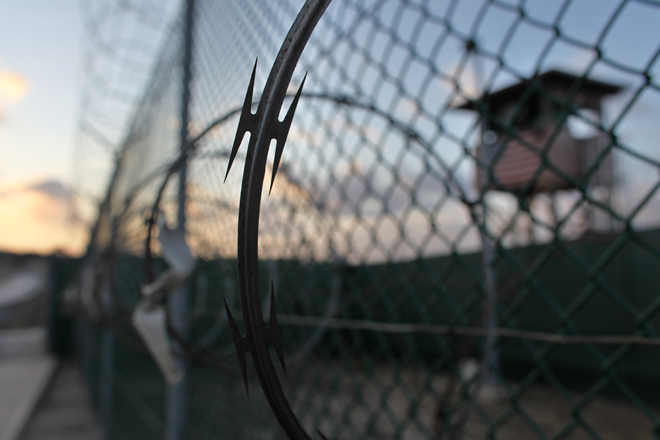MIAMI (AP) — Most prisoners on the hunger strike at Guantanamo Bay have resumed eating, the U.S. military said Friday, suggesting a possible end, or at least a pause, to a protest that brought renewed attention to their indefinite detention at the base in Cuba.
The military tally of prisoners on the hunger strike was still at 102, but 99 of them had eaten a meal within the past 24 hours, according to Army Lt. Col. Sam House, a detention center spokesman.
They were still considered hunger strikers because the military requires several days of sustained eating and a minimal caloric intake before a prisoner is removed from the list. In addition, some men were receiving meals in a controlled manner because they had been receiving liquid nutrients and can’t safely return to consuming food at a normal pace, House said.
The military said 45 of the prisoners were still on the “enteral feed list,” meaning they can be strapped down and fed a liquid nutrient mix through a nasogastric tube. A U.S. federal judge on Monday called it a “painful, humiliating and degrading process,” in a ruling in which she said she had no authority to order it stopped.
It wasn’t clear whether prisoners intended to abandon a protest that has roiled Guantanamo for more than four months and prompted President Barack Obama to renew his efforts to transfer prisoners out of the prison and close it.
Navy Capt. Robert Durand said most of the prisoners took part in a meal of lamb to break the first day of the traditional fast during the Muslim holy period of Ramadan, which lasts through the month. He also said it had been unusually peaceful in the camps, largely free of conflict between guards and prisoners.
“We are just pleased that they are for the most part eating and for the most part we are having good order and discipline in the camps,” Durand said.
Another possible factor is that prison officials recently allowed dozens of the men to return to communal living under certain new restrictions, including that they refrain from hunger striking.
Prison officials moved most of the prisoners out of communal units and into single, solid-walled cells, during a violent clash in April after prisoners covered the security cameras that allowed guards to monitor them.
Lawyers for prisoners have accused the military all along of undercounting the hunger strike numbers and they remained skeptical of the latest reports. “They have tried to downplay this from the beginning,” said Carlos Warner, an Ohio public defender who represents 11 prisoners.
“All I hear from my clients is that they are going to keep going and they are not going to stop,” said David Remes, who represents five prisoners who were being force-fed. “Getting the president’s attention isn’t enough. Getting him to start sending detainees home is what he has to do.”
Copyright 2013 The Associated Press.










